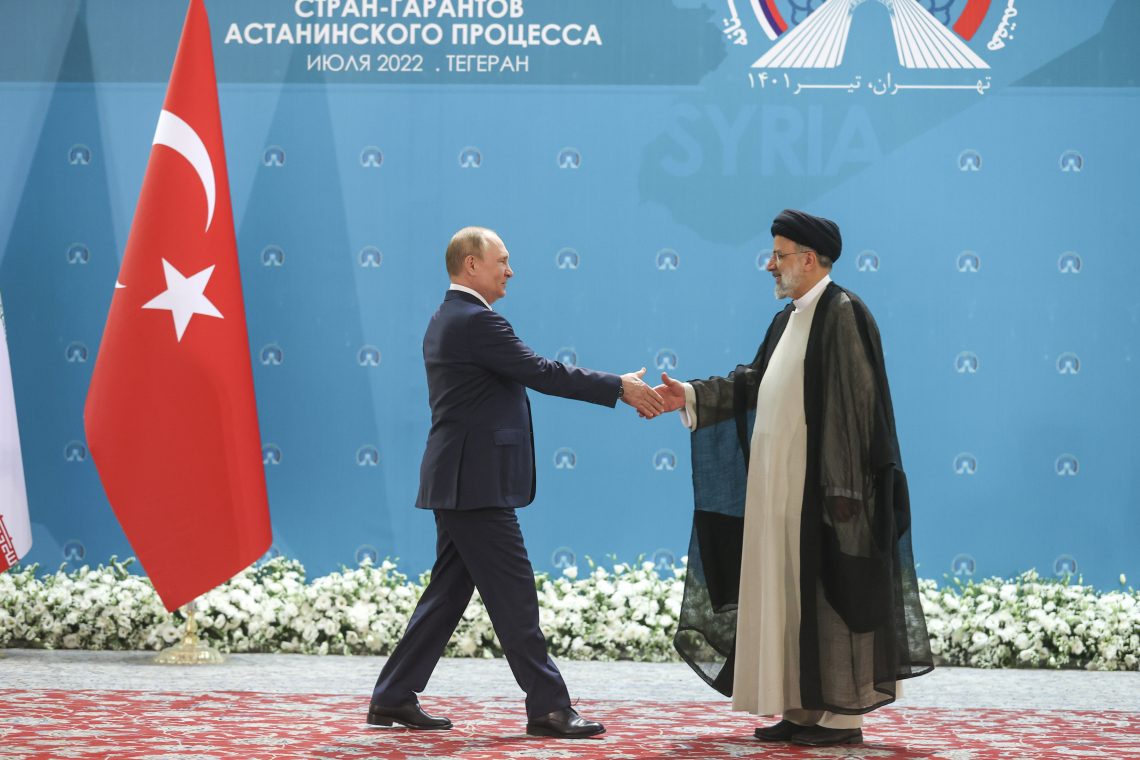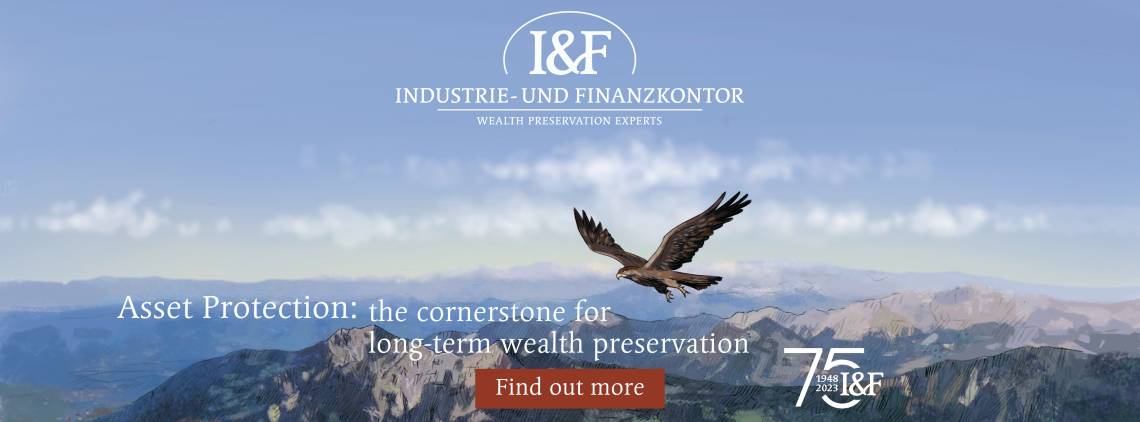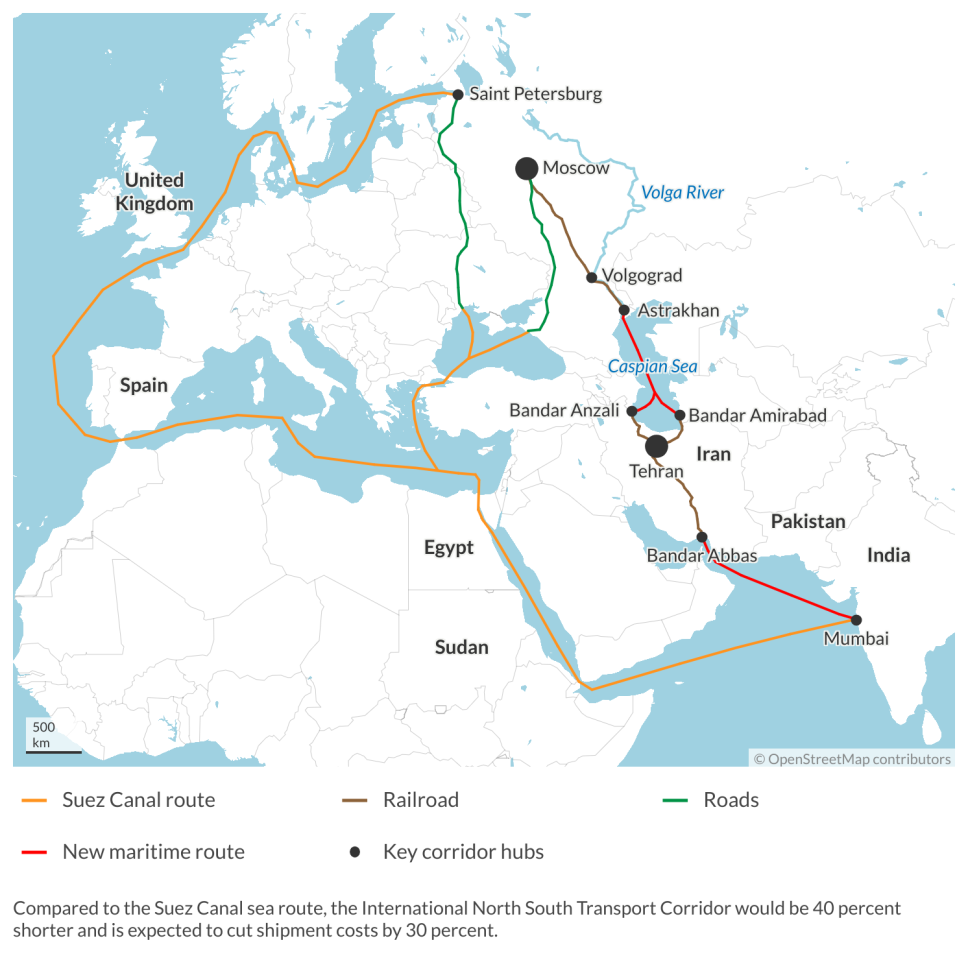The problem-ridden development of a Russia-Iran axis
The two Western-sanctioned outsider powers are striving to tighten their military and economic cooperation. Yet important obstacles remain.

In a nutshell
- Iran aids the Russian war effort in Ukraine with its materiel
- It wants in return Russian investment in connectivity infrastructure
- That is costly and the two countries’ other alliances pose problems
The war in Ukraine has boosted Moscow-Tehran relations, giving rise to scenarios on how a Russia-Iran axis may develop. One is a short-term story of Iranian materiel support for the Russian war in Ukraine, which is unfolding. The other involves longer-term changes in the regional transport infrastructure, the famed “Eurasian connectivity.” This scenario may be in the works.
While few approve of the gunrunning, the prospect of Russia and Iran breathing new life into the north-south transport route may still garner self-interested support from other parties. Even more importantly, it may cement the relationship between Moscow and Tehran.
Not only the drones
Iran’s short-term role in supporting the Russian aggression against Ukraine is evident. While there is evidence that Russia is getting supplies for its arms production via intermediaries in third countries, Iran is the only country openly admitting it is providing weapons. Many crewless combat aerial vehicles (Shahed drones) have been delivered to the Russian army from Iran’s manufacturers, and preparations are being made to make them in Russia. Presumably, Iran also provides large volumes of other munitions, ranging from artillery and mortar shells to small-arms rounds, for the invader’s troops.
Ships “going dark” on the Caspian Sea indicate shady business going on.
Some supplies have been carried via large cargo planes of Iranian airlines (Iran has several private and public airline companies in operation) that have been tracked flying from Iran to airports in Moscow. But the main pathway has been via the Caspian Sea. Tracking of maritime movements has shown a boost in the number of vessels sailing from ports in Iran, mainly Amirabad and Bandar Anzali, to Astrakhan in Russia and up the Volga River.
It is telling that many of these ships make parts of their journeys with their AIS (Automatic Identification System) transponders turned off. Although this clearly violates international maritime safety regulations, the practice has become increasingly common for Russian shipping engaged in clandestine intelligence activities and evading sanctions on oil export via ship-to-ship transfers at sea. Ships “going dark” on the Caspian Sea indicate shady business going on.

The zombie flotilla
It also indicates the boost in trade that many small vessels for river and coastal transport, shoddily built in the hundreds in the Soviet era, have been relocated to the Caspian Sea. Sailing under names like Volgo-Balt, Volgo-Neft and Sormovskiy, they are known as floating scrap. The coastal nations in the Baltic found good reason to be concerned about poorly designed Soviet vessels getting caught in the ice, requiring costly ice breaker assistance and posing the danger of oil spills from single-hull oil tankers. Now this flotilla of zombies is the purveyor of weapons from Iran.
Western governments can do little to block or even slow down this traffic. Iran is already under heavy sanctions, and the other Caspian coastal nations are pursuing their own strategies. Theoretically, Kazakhstan might be enticed to intervene, for example, to deflect accusations that it serves as a conduit for Russian sanctions busting, but there are no signs of this happening. Azerbaijan will not move against Iran until Turkey greenlights that, and Turkmenistan is notoriously aloof.
Enter the INSTC connecting project
The incentive for Iran to engage in these activities goes beyond seeking to influence the outcome of the war in Ukraine. Given its isolation under heavy Western sanctions, Tehran has a longer-term interest in securing Russian financing for a project critical to its economic survival, the International North-South Transport Corridor (INSTC).
Facts & figures
Conceived in the early 2000s by Russia, Iran and India, the INSTC envisions a 7,200-kilometer-long “multimodal” transport corridor that would connect Russia with India via Iran, providing access to warm water ports on the Indian Ocean and in the Persian Gulf. It has a western railway route, hugging the coastline through Azerbaijan, and a Trans-Caspian way by rail and ship across the Caspian Sea. Compared to the Suez Canal route, that corridor would be much shorter and more economical.
Despite encouraging projections, not much has happened on the ground since the early days: the interested parties have displayed little tendency to put up the needed investment. That starkly contrasts with the Belt and Road Initiative (BRI) launched by China President Xi Jinping in 2013. Massively funded from the outset, the BRI has led to substantial infrastructure investment across Central Asia and a boost in trade from China to European markets.
Read more on connectivity projects in Central Asia
Iran’s rapprochement with Azerbaijan opens dangerous dynamics
How China’s Belt and Road Initiative is faring
Scrapping the money
The war in Ukraine has provided a significant impetus for the corridor. Internationally isolated and facing reduced trade with Europe, Russia urgently needs to secure access to alternative markets and transport routes. The increase in Indian purchases of Russian oil and gas further enhances the need for the cost-saving INSTC.
But infrastructure development requires a lot of money. Before the Russian full-scale invasion of Ukraine, Iran felt compelled to provide its funds to promote the INSTC. In early 2022, Tehran complained that Moscow had shown little interest in developing the necessary infrastructure. By late 2022, Iran reportedly committed close to $13 billion to different projects, including upgrading the port in Astrakhan and helping to dredge the Volga River to improve access to the Volga-Don canal. The Islamic Republic of Iran Shipping Line (IRISL) alone announced investing $10 million, funded with Russian banking loans, to improve Solyanka Port in Astrakhan and acquire a large container ship.
If Iran is to realize its vision of becoming a regional transport hub, it must address the poorly developed domestic infrastructure. While roads are in reasonably good condition, railways are under par. There is a need to speed up the construction of tunnels and bridges, improve the quality of rolling stock and invest in additional rail construction in strategic locations. Handling capacity in the Iranian ports also needs to be upgraded.
Russia gives in – a little
Recent developments suggest that Tehran may now hope Russia is under sufficient pressure to provide serious financing for the INSTC. It points out the sharp increase in mutual trade by 20 percent during 2022 over 2021. Moscow may be even more incentivized because its trade with India in 2022 reached $38 billion, outpacing its $5 billion commerce with Iran. And perhaps the centuries-old Russian dream of obtaining access to the Indian Ocean may play a role. Russia analyst Nikita Smagin summarizes that the Kremlin seems resigned to footing the bill because it has no choice: “[I]t needs the North-South Corridor, and no one else is willing to invest in it.”
Significant uncertainty derives from both sides cultivating alliances elsewhere.
A sign of the times was provided in July 2022 when Russian President Vladimir Putin visited Iran. His visit triggered a slew of comments about the importance of the corridor. A key feature in these discussions was the need to complete the Rasht (Iran)-Astara (Azerbaijan) railway, a missing cross-border link stretching over 162 kilometers of challenging terrain, crucial to the operation of the western corridor of the INSTC.

In mid-March 2022, President Putin called on Russian businesses to undertake the investment but found no takers. On May 17, he signed an agreement with Iranian President Ebrahim Raisi that commits Russia to cover $1.7 billion of the project’s estimated $5 billion cost. The railway link is supposed to be completed by 2027.
On paper, the INSTC is a clever idea. It would cut transport costs linking two major economies destined to remain under Western sanctions for quite some time. And it has other stakeholders, not the least of which is India. Memorandums and special declarations have also been signed between Iran, Russia and Azerbaijan, highlighting the corridor’s importance. However, it still does not look like a viable project. But perhaps that is not what the actual game is about.
Scenarios
The main concern looking forward is not so much the economic viability of the INSTC but whether the project’s potential benefits would suffice to keep the peace between Moscow and Tehran. Given the size of the stakes for both sides, the intuitive answer would be affirmative. But it may not be that easy: significant uncertainty derives from both sides cultivating alliances elsewhere.
Iran’s fears
Iran is concerned, somewhat realistically, that its long-troubled relations with Azerbaijan may deteriorate to the point where Baku intervenes to block the operation of the Rasht-Astara railway. Mindful of that, Tehran has sought to revive an old concept for a Persian Gulf-Black Sea corridor to connect Mumbai in India with Bandar Abbas in Iran and lead onwards to Europe via the South Caucasus. Bulgaria and Greece have expressed interest in joining.
If India could be cajoled into providing finance, and if the route is drawn via Armenia and Georgia, it will shut out Azerbaijan and Russia. That implies a strategic choice where Tehran must weigh the risk of losing Russian financial support in developing its domestic infrastructure.
Russia’s other business
Conversely, Russia has been cultivating relations with the United Arab Emirates. Abu Dhabi condemned the Russian aggression against Ukraine but has been instrumental in providing a haven for Russian capital, helping to find a way around Western bans on Russian financial transactions and offering a safe playground for wealthy Russians. Dubai may not be London or Nice, but it is surely preferable to Sochi. A recent development in relations between Iran and the UAE suggests that Russia may also be faced with a strategic choice of some importance.
The conflict concerns a territorial dispute over some islands in the Strait of Hormuz that Iran controls. When the UAE tabled a proposal for a peaceful solution backed by the Cooperation Council for the Arab States of the Persian Gulf, Russia decided to offer its support. That outraged the Iranian side. The Russian ambassador was summoned to the Iranian foreign ministry, and the Iranian media discussed reassessing relations with Russia.
The implied threat is that if Moscow does not retract on the islands, it can forget about further deliveries of Iranian drones.
Moscow’s final choice
Facing this dilemma, Moscow may be tempted to side with money over weapons. The reason is simple: Iran is a bottomless pit regarding financial needs. During 2021 alone, Russia supplied Iran with $5 billion worth of loans for various infrastructure projects. Iran’s debt related to the Russian-built Bushehr nuclear power plant stands at 500 million euros, and its debts for Russian food exports are rising by the month. In Mr. Smagin’s words, “Russia continues to provide loans despite Iran’s ballooning debt from previous projects. Given Tehran’s financial precarity and ongoing political crisis, it’s doubtful that those loans will ever be repaid.”
A continued Russian commitment to the INSTC will require a steady flow of investment in roads, ports and depots. That may prove hard to sustain, especially as Russian export revenues begin to dry up. Finally, however, even that may not matter much. The accelerating militarization of Moscow is likely the decisive factor. The weapons question will trump money concerns. Even if it causes heartburn in Abu Dhabi, Moscow will prioritize its Iranian drones.










